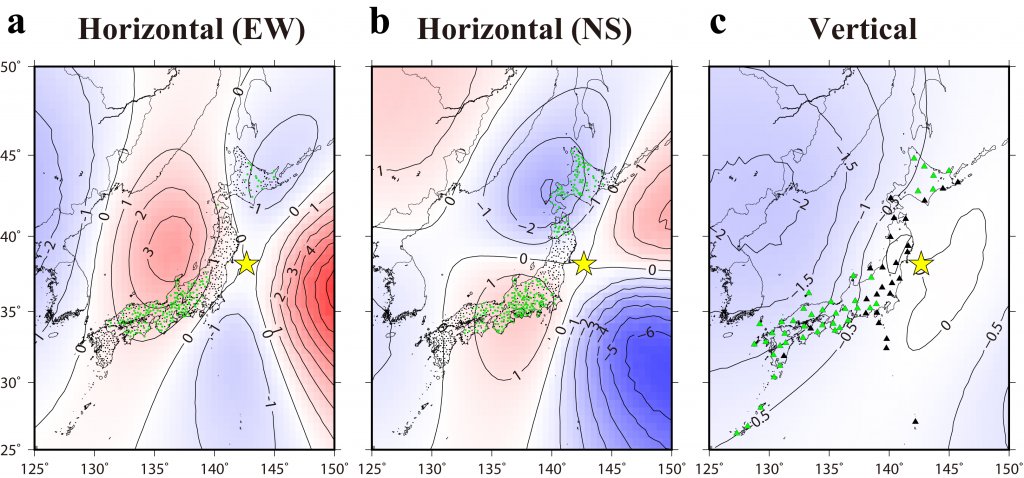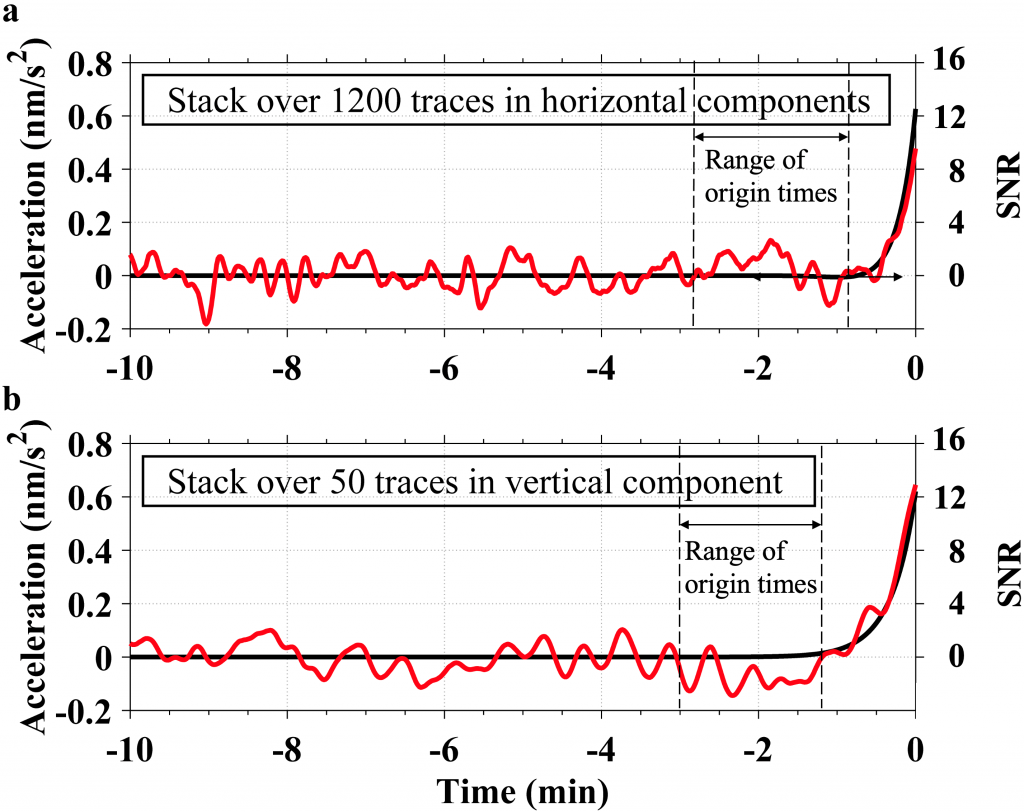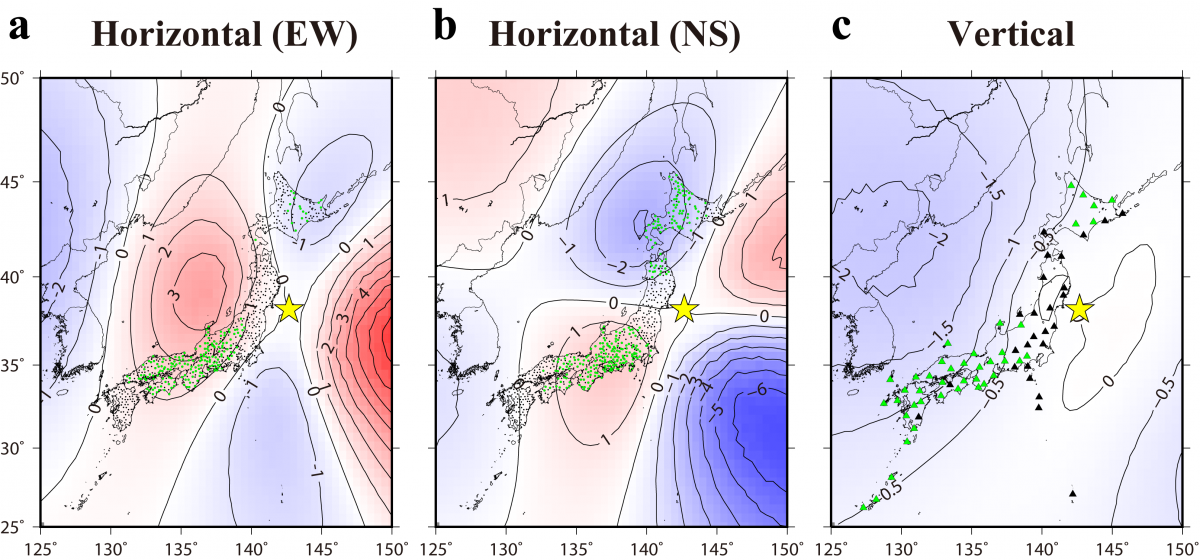Masaya Kimura1, Nobuki Kame1 , Shingo Watada1, Akito Araya1, Takashi Kunugi2 and Rongjiang Wang3
1 Earthquake Research Institute, The University of Tokyo,
2 National Research Institute for Earth Science and Disaster Resilience
3 Helmholtz Centre Potsdam, GFZ German Research Centre for Geosciences
Dynamic earthquake rupture causes mass redistribution around the fault, and the emitted propagating seismic waves are accompanied by bulk density perturbations. Both processes cause transient gravity changes prior to the arrival of P-waves. Such pre-P gravity signals have been detected in previous studies of several large earthquakes. However, the detections were limited to the vertical component of the signal owing to the high noise level in the horizontal records. In this study, we analyzed dense tiltmeter array data in Japan to search for the horizontal components of the signal from the 2011 Mw 9.1 Tohoku-Oki earthquake. Based on the synthetic waveforms computed for a realistic Earth model, we stacked the horizontal records and identified a signal that evidently exceeded the noise level. We further performed a waveform inversion analysis to estimate the source parameters. The horizontal tiltmeter data, combined with the vertical component of the broadband seismometer array data, yielded a constraint on the dip angle and magnitude of the earthquake in the ranges of 11.5°–15.3° and 8.75°–8.92°, respectively. Our results indicate that the analysis of the three components of the pre-P gravity signal avoids the intrinsic trade-off problem between the dip angle and seismic moment in determining the source mechanism of shallow earthquakes. Pre-P gravity signals open a new observation window for earthquake source studies.
Keywords: Pre-P gravity signal, Prompt elastogravity signal, Time-variable gravity, The 2011 Tohoku-Oki earthquake, Determination of dip angle and moment for shallow earthquakes




